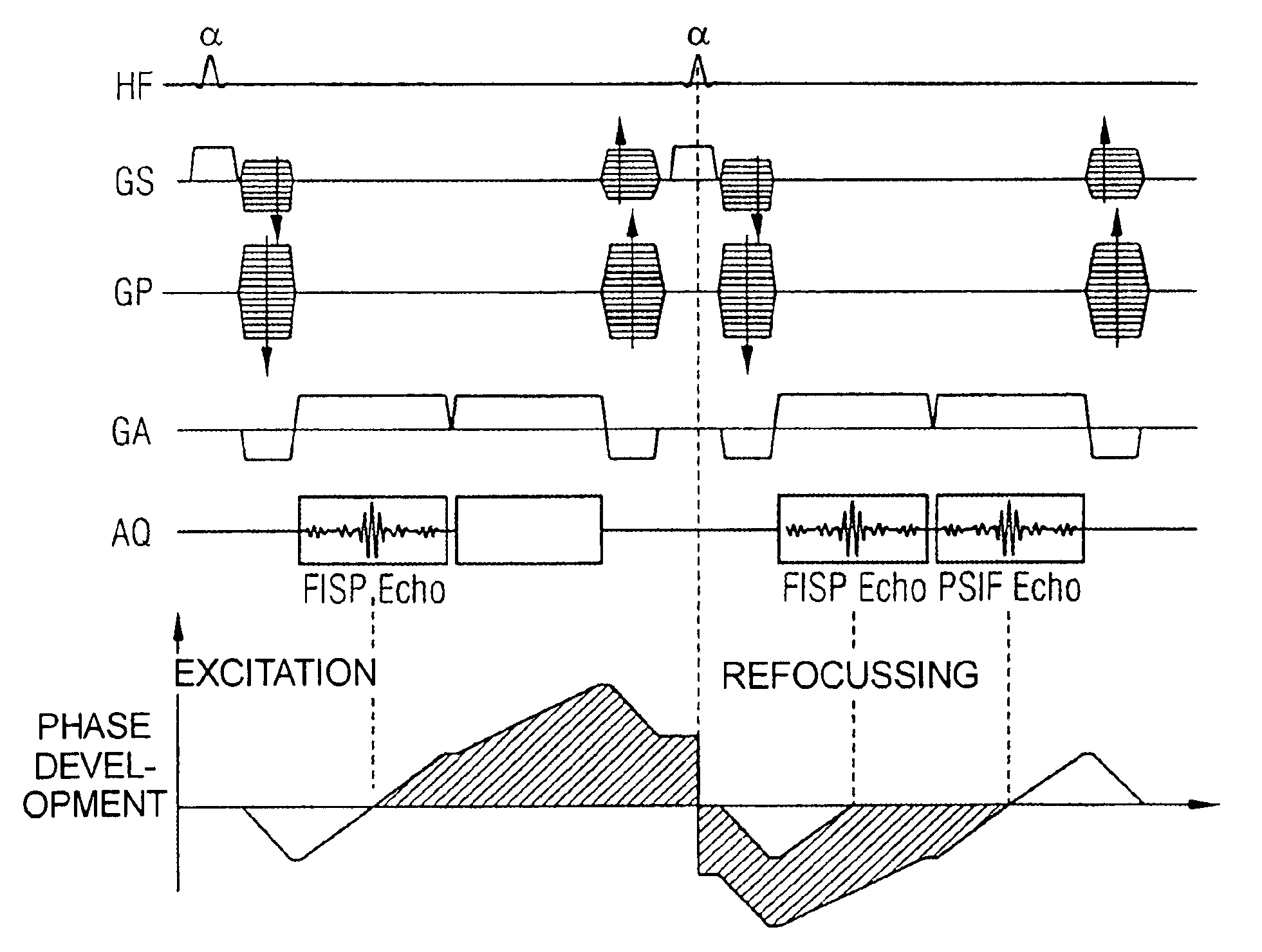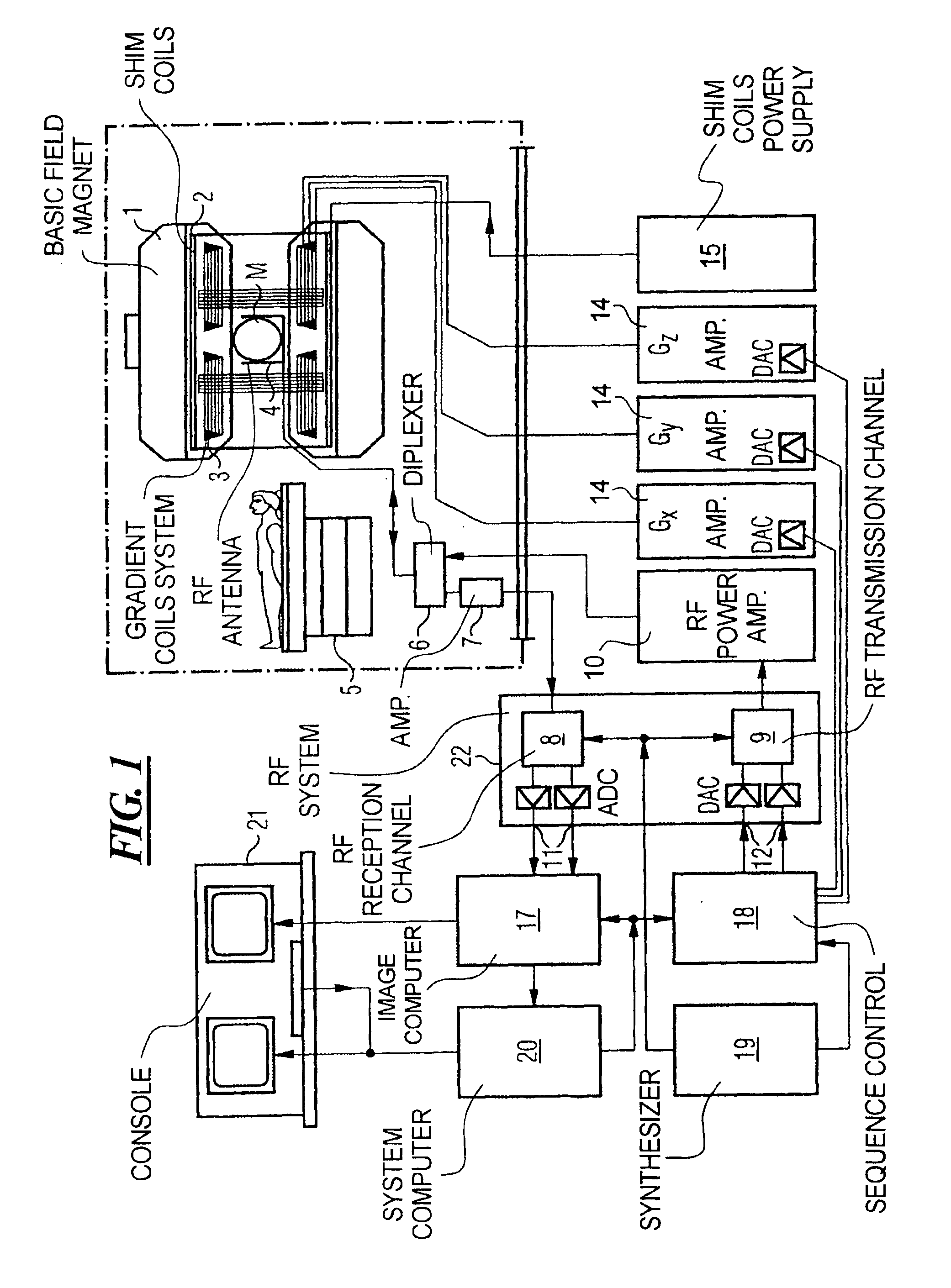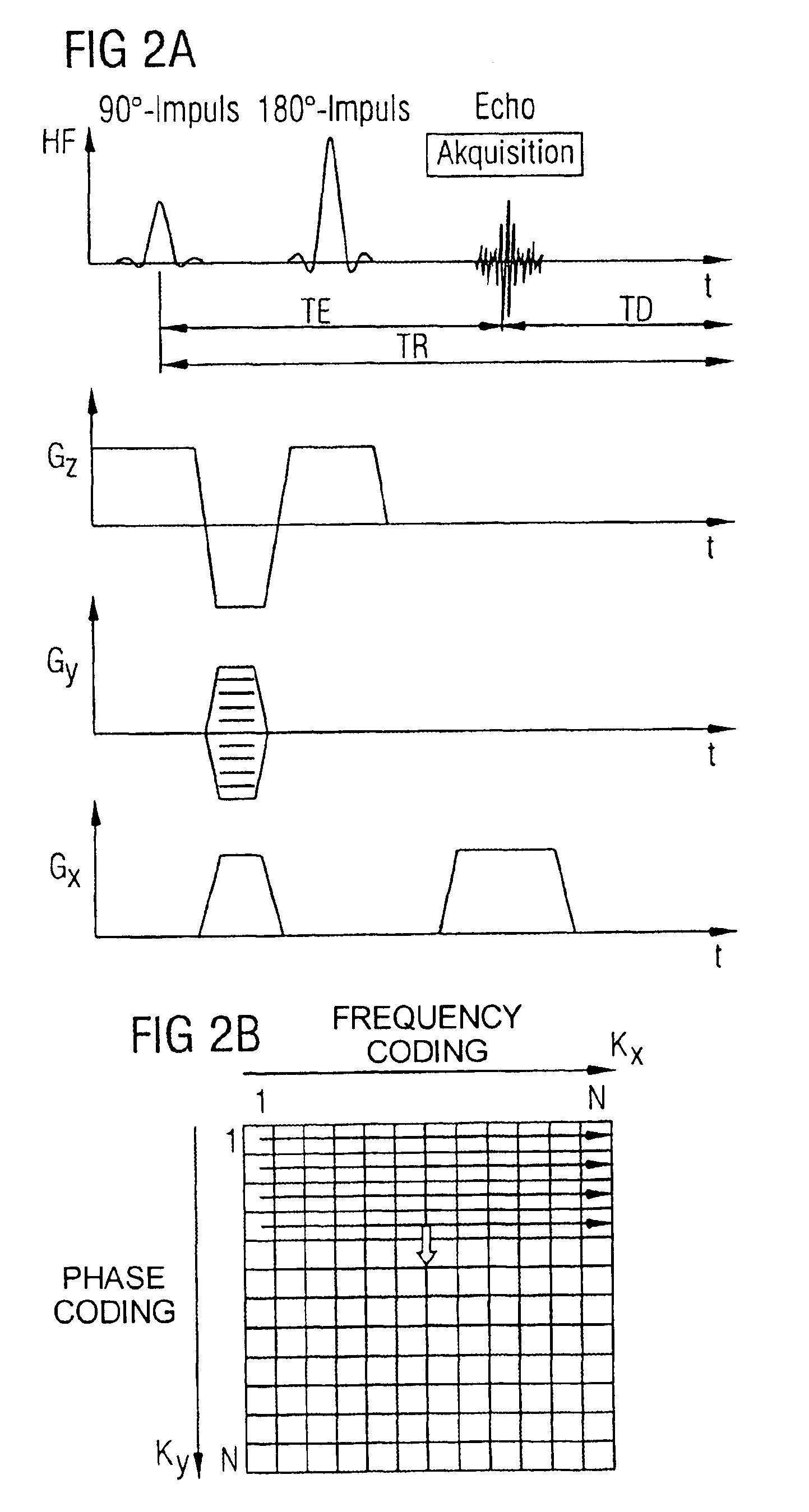Method to determine the ADC coefficients in diffusion-weighted magnetic resonance imaging given use of steady-state sequences
a magnetic resonance imaging and steady-state sequence technology, applied in the field of magnetic resonance tomography, can solve the problems of marked sensitivity, strong phase sensitivity, strong image artifacts or distortion artifacts, etc., and achieve the effect of preventing artifacts from arising, reducing the total measurement time, and increasing bandwidth
- Summary
- Abstract
- Description
- Claims
- Application Information
AI Technical Summary
Benefits of technology
Problems solved by technology
Method used
Image
Examples
Embodiment Construction
[0037]FIG. 1 schematically shows a nuclear magnetic resonance tomography device that generates gradient pulses according to the present invention. The assembly of the component of the magnetic resonance tomography device corresponds to that of a typical tomography device, but differs in operation as described below. A basic field magnet 1 generates a temporally constant strong magnetic field to polarize or align the nuclear spins in the examination region of a subject, such as for example a part of a human body to be examined. The high homogeneity of the basic field magnet required for the magnetic resonance measurement is defined in a spherical measurement volume M, into which the parts of the human body to be examined are moved. To support the homogeneity requirements, and in particular to eliminate temporally invariable influences, shim plates made of ferromagnetic material are mounted at appropriate locations. Temporally variable influences are eliminated by shim coils 2 that ar...
PUM
 Login to View More
Login to View More Abstract
Description
Claims
Application Information
 Login to View More
Login to View More - R&D
- Intellectual Property
- Life Sciences
- Materials
- Tech Scout
- Unparalleled Data Quality
- Higher Quality Content
- 60% Fewer Hallucinations
Browse by: Latest US Patents, China's latest patents, Technical Efficacy Thesaurus, Application Domain, Technology Topic, Popular Technical Reports.
© 2025 PatSnap. All rights reserved.Legal|Privacy policy|Modern Slavery Act Transparency Statement|Sitemap|About US| Contact US: help@patsnap.com



